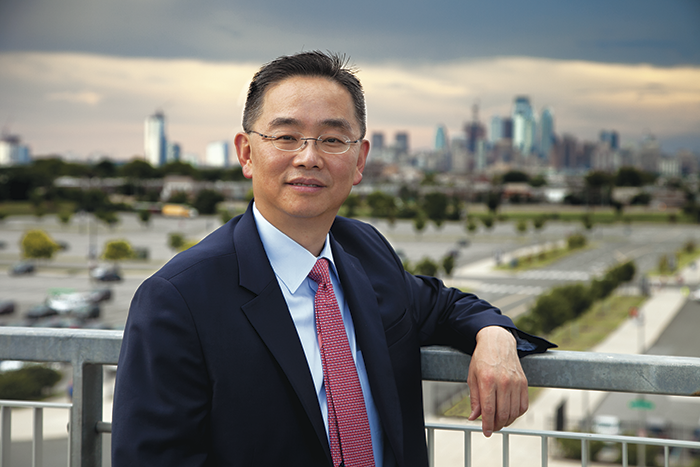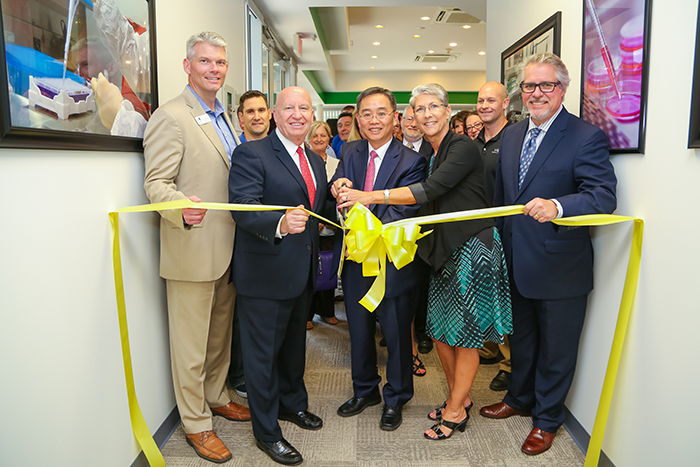Sequence Initiated

Young Park '87
by Tony Moore; video by Joe O'Neill
The Zika virus was discovered in 1947, but it wasn’t until late 2014 that it appeared on the public’s radar. In July, coinciding with the virus’ appearance in the continental U.S. and the Summer Olympics in Rio de Janeiro, where Zika is a major concern, the first human trial for a Zika vaccine got underway.
The company behind this landmark clinical trial is GeneOne Life Science, and Young Park ’87 is the company’s president and CEO.
“Zika is such a difficult virus, and every week we’re finding different things about it in our laboratories,” says Park. “It does strange and scary things.”
Park was running his own law firm until about 15 years ago, when he ran into an MIT friend from his graduate school days. The friend was launching a biotech start-up, and he asked Park if he’d be interested in investing in it. It turned out to be a fated meeting: Young got involved with the company, now a publically traded biotech called Inovio, and then went to become president and CEO of GeneOne, based in South Korea, leaving his law practice behind.
So where’s the bridge between the law and biotechnology, especially from someone who says with a laugh, “I never liked biology”? Well, you might say it’s Dickinson.

Young Park ’87 and GeneOne make medical history with the first human trial of a Zika vaccine.
“I’m a great fan of liberal-arts education,” Park says. “It opens up your mind to different areas, teaches you to think. You develop curiosity, and you can explore. Maybe because of that, I was a lawyer but was willing to go into biotech and learn biology.”
When Park got involved with Inovio, learning biology wasn’t yet on his agenda. His roles were chiefly in the realms of fundraising and legal work (he attended the University of Pennsylvania Law School and then earned his MBA at MIT’s Sloan School of Management). But then that curiosity kicked in. “I really got interested in biology and biotech,” he says, “and I started studying it. Now, more than a decade later. ...”
Yes, more than a decade later, Park finds himself at the forefront of fighting Zika, a mosquito-borne virus that’s been found to cause birth defects, including microcephaly, in babies born to infected mothers. It also can cause significant neurologic disease in adults, including Guillain-Barre syndrome. Currently, the race is on from all corners of the pharmaceutical industry to stop the virus.
“Usually, it takes about 10 to 15 years to develop a vaccine and years to dose the first human,” Park says, noting that the clinical subjects are people who don’t have the Zika virus and aren’t otherwise sick.
“We’re doing it all in months.” One way GeneOne, working with Inovio, is able to get the trials off the ground so quickly is because the FDA doesn’t require any toxicology tests for the vaccine. “We don’t use an actual virus, live or dead,” Park explains. “We use a computer-generated DNA sequence of the virus that cannot actually cause infection in humans. When your body detects our DNA vaccine, it sees [a certain part of] the DNA sequence of the virus, and the body will generate an immune response against it.”

If successful, and if the results come in before those of other researchers, the vaccine will be the first synthetic DNA vaccine ever to make it to market—25 years after the technology was first explored.
Young says GeneOne is at least months ahead of the closest competition, and interim results will be in by year’s end. The speed of the development process via the DNA sequencing platform is key to being able to quickly tackle any widespread health crisis.
“Let’s say there is another pandemic situation, and people are dying,” Park says. “How do you respond? We are constantly working on speeding up the process, and a DNA vaccine may be one of very few technologies that allow us to respond very quickly.” So while the Zika vaccine trials run their course, Park is looking to the more immediate future and his son James’ first year at Dickinson, a member of the class of 2020, who is no doubt inspired by his father’s thoughts on his alma mater and its liberal-arts mission.
“It’s a great foundation for future work,” he says. “I give great credit to Dickinson. ... It was a phenomenal experience.”
Learn More
Published October 18, 2016